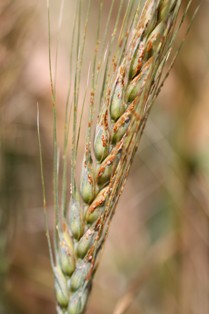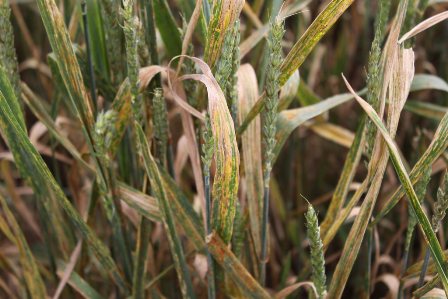Wheat stem rust-No more
Stem rust has recently reemerged in parts of the world, where it has devastated crops due to its ability to evolve – reversing much of the work that happened during the Green Revolution. Now, scientists have isolated the very first rust pathogen gene that wheat plants detect to ‘switch on’ resistance.

Stem rust has recently reemerged in parts of the world, where it has devastated crops due to its ability to evolve – reversing much of the work that happened during the Green Revolution. Now, scientists have isolated the very first rust pathogen gene that wheat plants detect to ‘switch on’ resistance.
“For the first time, it will be possible to do DNA testing to identify whether a rust in a wheat crop anywhere in the world can overcome a rust-resistance gene, called Sr50, which is being introduced in high-yielding wheat varieties,” says Robert Park, professor at the University of Sydney.
Research targeting stem rust through DNA testing results has resulted in a breakthrough in the wheat field. Now, suspect samples could be analyzed within hours instead of weeks. This shortened window of time has the potential to save crops from being decimated by stem rust, historically the most dangerous pathogen to wheat.
 Jiapeng Chen, a doctorate candidate from the University of Sydney, initiated the work by sequencing and analyzing the genome of a virulent rust isolate. Chen says it’s the first important step in addressing the diagnostic challenges posed by ever-changing fungi, which result in new rust pathogen strains. By doing so, the researchers are able to stay one step ahead of the pathogen.
Jiapeng Chen, a doctorate candidate from the University of Sydney, initiated the work by sequencing and analyzing the genome of a virulent rust isolate. Chen says it’s the first important step in addressing the diagnostic challenges posed by ever-changing fungi, which result in new rust pathogen strains. By doing so, the researchers are able to stay one step ahead of the pathogen.
The DNA test will indicate whether or not the wheat crop would need to be sprayed with a fungicide to protect against rust, which could destroy the crop in a matter of weeks, says Park. wheat.

The collaboration includes the University of Sydney, Commonwealth Scientific Industrial Research Organization (CSIRO), UK’s Rothamsted Research, the University of Minnesota, and the United States Department of Agriculture (USDA). The new findings are being published in the journal, Science.
By Sangeeta
Courtesy: Agiculture.com
Download Krishi Jagran Mobile App for more updates on the Latest Agriculture News, Agriculture Quiz, Crop Calendar, Jobs in Agriculture, and more.